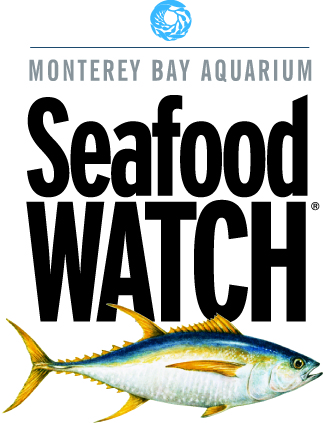Q & A with Sheila Bowman of Monterey Bay Aquarium Seafood Watch
JBF Editors
JBF EditorsOctober 12, 2012

A leader in setting guidelines for sustainable fishing and consumption practices, the Monterey Bay Aquarium and its Seafood Watch program are crucial players in the fight for ocean conservation. Sheila Bowman, the organization’s manager of culinary and strategic initiatives, will join us at our third annual food conference next week. We talked to her about her work, Seafood Watch’s handy app for consumers, and the species of fish that gives her hope.
JBF: What is your role at the Monterey Bay Aquarium Seafood Watch?
SB: I work with our culinary audiences: chefs at all levels of the industry, plus food media. I help these people understand the importance of sustainable seafood and how they can use the Monterey Bay Aquarium Seafood Watch program to make a difference. I also work with our more strategic audiences to help them have the most impact with their messaging about sustainable seafood.
JBF: You’re doing a short talk during our annual conference. Can you give us a preview of the topic and how it relates to trust, which is this year's theme?
SB: It's a hopeful message mostly, but not without some tough reality. I will be talking about the issues facing the oceans, what's brought us there, the changes being made to improve the situation, and the results we are starting to see. I'm in the “Solutions that Build Trust” part of the conference agenda, so I will be focusing on how we can push for solutions to current issues and thereby build trust in our seafood system.
JBF: Does Seafood Watch offer any tools or guides that can help consumers make more informed dining or shopping choices?
SB: We share our recommendations through our pocket guides, which are handy, foldout wallet cards with sustainability lists and information about the seafood in each region of the country. Each species is placed in one of three categories: "Best Choice," "Good Alternative," or "Avoid." These guidelines are also available via our smartphone app for iPhone and Android. The app also has a crowdsourcing function called Project FishMap: users can indicate restaurants and retailers that offer sustainable seafood in their area, then other users make choices based on those suggestions. We want shoppers to understand that sustainable options can be found all around them.
JBF: Is the aquarium working on any new initiatives that you can share with us?
SB: We've always known the culinary community has interest and influence in sustainable seafood, so we’re committing more resources to working with this group. We are also working on ways to increase the number of recommendations available. We're pursuing this in several ways: by assessing existing certifiers, like the Aquaculture and Marine Stewardship Councils, to see how their standards compare to ours; by recognizing credible fishery improvement projects; and other strategies.
JBF: Subjects like ocean life, conservation, and the environment can be pretty doom and gloom these days. What's something encouraging that you can tell us?
SB: There are a lot of positives in the seafood realm. North American businesses are making commitments to sustainable seafood, thanks in part to input and concern from their customers. As a result, the seafood industry is making changes, and sustainable seafood is easier to find than it was ten years ago.
We are also seeing fisheries take the steps necessary to reduce their environmental impact: more conservative quotas, better gear and fishing practices, and the allocation of protected marine areas that don’t allow fishing, which gives fish stocks a chance to grow and reproduce.
We're starting to see real results in the water, such as the recovery of Atlantic swordfish: the species is more abundant, has a better population structure and bigger fish, and is returning to the near-shore environments that had formerly been "fished-out." These are all signs that things are moving in the right direction. We need to put a lot more of these practices and regulations into place, but it shows how nature can rebound if given the chance. That gives me hope.



-57 web.jpg)


